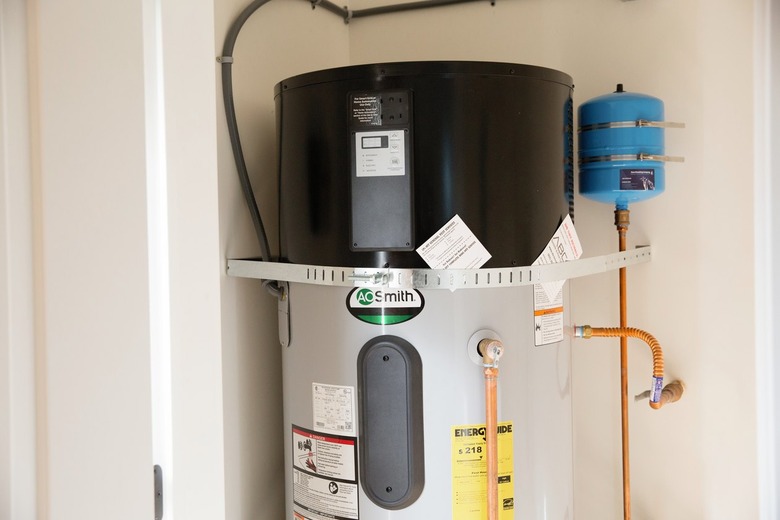How To Troubleshoot The Water Heater Electric Thermostats
If you have an electric water heater, it uses one or two resistive elements to heat the water. Each element is controlled by a hot water heater thermostat that turns it on when the water temperature falls below its cut-in setting and turns it off when the water temperature exceeds its cut-out setting. If you don't seem to have enough hot water for a shower or the water never gets hot enough to be comfortable, it could be that the hot water heater is not working, and the reason could be that one of the thermostats is faulty.
You can check the thermostats with a multimeter in one of two ways. You can turn off the power and check for continuity by measuring resistance, or you can leave the power on and check the voltage. Either way, a shock is a real possibility, so wear rubber gloves and rubber-soled shoes and use insulated tools for safety.
Preparing for a Water Heater Thermostat Test
Preparing for a Water Heater Thermostat Test
A water heater repair will be unnecessary if there's another reason why you don't have hot water. If you get cold water in the shower but hot water everywhere else, the shower valve may need cleaning. Loss of hot water throughout the house, on the other hand, is the sign of a water heater malfunction.
It's possible that the breaker in the main panel has tripped, so you should check it. If it has tripped, you may be able to restore power by simply resetting it. If it hasn't tripped, be sure to turn it off before you remove the panels from the water heater to expose the elements and thermostats. You can leave the power off to conduct a continuity test, but you'll have to turn it back on to perform a voltage test. Either test can be conclusive, so you probably don't need to conduct both of them. Note, however, that the water in the tank has to be above 90 degrees Fahrenheit to conduct a continuity test.
A Thermostat Continuity Test
A Thermostat Continuity Test
A continuity test will tell you if the thermostat circuit is open, which means you need a new thermostat. To do this, leave the breaker off and set a multimeter to measure resistance on the Ω1 scale. Turn the top thermostat to its highest setting and touch one meter lead to the top terminal screw (marked #1) and the other lead to the terminal screw underneath it (#2). The meter should read 0. If you get a positive reading, the thermostat is bad and needs to be replaced. If the thermostat has a #4 terminal screw opposite the #1 and #2 screws, that's the output to the lower thermostat. Test it by touching one meter lead to that screw and the other lead to the #1 screw. Again, the resistance reading should be 0. If it isn't, then it is a bad thermostat.
If the top thermostat checks out, you need to check the lower one. Turn the top thermostat all the way off and the lower one all the way on to ensure that the circuit between the two thermostats is open. Test the terminal screws on the lower thermostat. All readings should be 0. If you get a positive resistance reading, that thermostat is bad.
Testing the Voltage
Testing the Voltage
If the water in the tank is cold, you may need to conduct a voltage test. Turn the breaker back on and keep in mind that all the terminals are now hot, so proceed with caution. Turn the upper thermostat to its highest setting and the lower one to its lowest setting. Set the multimeter to read voltage in the 500-volt range and touch the leads to terminal screws #1 and #2. The meter should read somewhere between 220 and 240 volts.
To test the lower thermostat, turn the top one to its lowest setting and the lower one to its highest setting. Touch one meter lead to the top screw and the other lead to the metal body of the water heater. The reading should be between 110 and 120 volts. If it isn't, the upper thermostat is not sending power to the lower one. Replace the upper thermostat. Repeat the test with the other screw. If either test results in a 0 voltage reading, the lower thermostat is bad and needs to be replaced.
If both thermostats pass the test, the reason you aren't getting hot water probably has something to do with the elements, so continue diagnosing the problem by testing the water heater elements.
